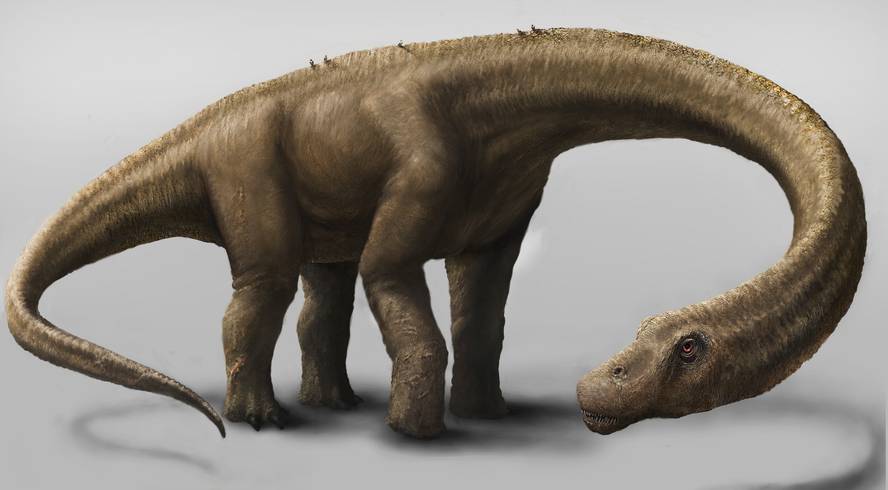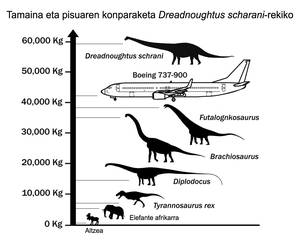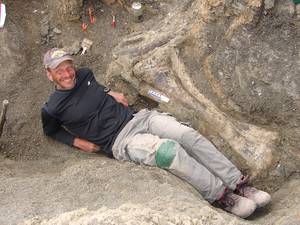The heaviest and most complete dinosaur

It was a 26 metre long vegetable, weighing approximately 60 tons. He lived in Patagonia 77 million years ago and his fossil remains have been exposed for the first time. With the name of Dreadnoughtus schrani has been baptized the largest terrestrial dinosaur discovered to date.
Researchers from the United States and Argentina, who made the discovery, have released the news in the journal Scientific Reports of the group Nature. According to palentologist Sinc Kenneth Lacovara, director of this research, what gives special importance to this discovery is the integrity of the skeleton. “We’ve found 100 bones and we think it could have 142 in total.” Therefore, they have found 70% of the total skeleton. The tail vertebrae, collars, ribs, fingers, a claw, jaw, a clamp and most of the bones of the extremities have been recovered, including the femur and a humerus. Since these two bones are the usual basis for calculating the mass of the quadrupeds, weight calculation is reliable.
To respond to the body's caloric need of 60 tons, scientists believe that most of the day the dinosaur would eat and eat plants.
“In addition to the weight,” says Lacovara, “the bones show that when the dinosaur died it was still growing. It is the best example of the great beings who have traveled the Earth.”
To recover the skeleton, the researchers conducted four excavation campaigns between 2005 and 2009 in Argentinian Patagonia, Chubut province. In the place where the giant schrani Dreadnoughtus was found, there was another smaller one, but the skeleton was not so complete. “We believe it would be a sudden flood that would hit the earth transforming it into mobile sand and swallowing it. That is why they will be in such good condition. Their misfortune has been our happiness.”







